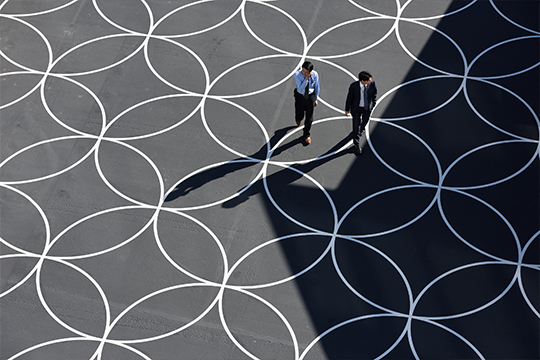Studio 3/01
Pattern Potentials: bridging utility and aesthetics
Jillian Walliss

Studio Description
There is increasing concern that landscape architecture is losing its disciplinary position as designers. Karen McCloskey (2013, 16) highlights how ‘much of the professional conversation revolves around problem-solving, instead of how these predominant environmental concerns are equally significant in terms of expression and experience.’ Similarly, Chang Huai-yan comments that while solving problems if not inherently a bad thing, it is the replication of solutions ( for example technical solutions for the cleansing of water) that is a major issue for him. He exclaims ‘Being a designer is becoming a rare thing’ (Ninsalam + Walliss, 2020; 267 ).
This studio focuses explicitly on design and pattern. Pattern is defined as the repetition of geometries that combine to establish an overall spatial organisation. While pattern continues to play a critical role for many Asian designers, pattern and surface has been met with suspicion in Western landscape architecture, considered variously as superficial, reductive, monotonous, static, and most critically, not site specific. However pattern offers much to designers. As McCloskey (2013:26) writes ‘patterns, as diagrams of process, carry the potential to bind together oppositional categories that still seem to plague discussions in landscape architecture—system versus composition, representation versus performance, matter versus symbol, vision (distance) versus immersion (multi- sensory).’
Drawing on theoretical writing on pattern and design, along with techniques of photography, parametrics, model making and drawing, students will explore the potential of pattern for generating a new urban space of retreat for Melbourne’s China Town, reflective of our COVID era.
Studio Leader
Jillian’s work focuses on the relationship between theory, technology, culture and contemporary design practice. Her research project Landscape Architecture and Digital Technologies: Reconceptualising Design and Making and the subsequent book, co-authored with Dr Heike Rahmann has been critically acclaimed by practice and academia. More recently, she co-edited the book The Big Asian Book of Landscape Architecture (with Heike Rahmann) which was published by Jovis in Dec 2020. Jillian was co-creative director of the International Festival of Landscape Architecture held in Melbourne in 2019. As part of this role she was instrumental in developing the Future Park Design Ideas competition which explores new open space futures for Melbourne 2050.
Readings & References
- Branko Kolarevic , and Kevin R. Klinger (2008) Manufacturing Material Effects: Rethinking Design and Making in Architecture. New York: Routledge, online resource.
- Karen M’Closkey (2013) Synthetic patterns: Fabricating landscapes in the age of 'green'
- Journal of Landscape Architecture, 8(1) 16-27. online resource.
- Karen M’Closkey and Keith VanDerSys (2017) Dynamic Patterns: visualizing landscapes in a digital age, New York, N.Y. : Routledge, online resource.
- Mary Pat McGuire (2020) Is landscape surface?, Journal of Landscape Architecture, 15:1, 18-31, online resource.
Schedule Mondays 12:00-15:00, 15:15-18:15 | Lecture Mondays 11:00-12:00
Need enrolment assistance?
Stop 1 provides enrolment and other support to Bachelor of Design, Bachelor of Environments and Melbourne School of Design students.